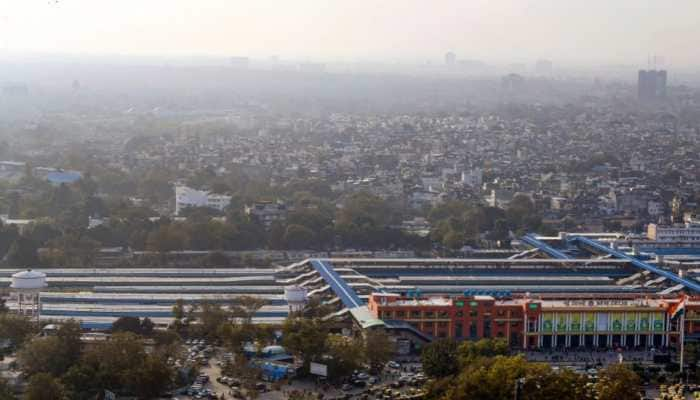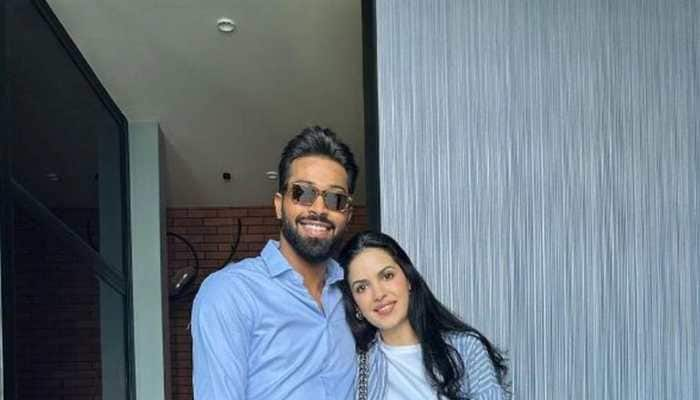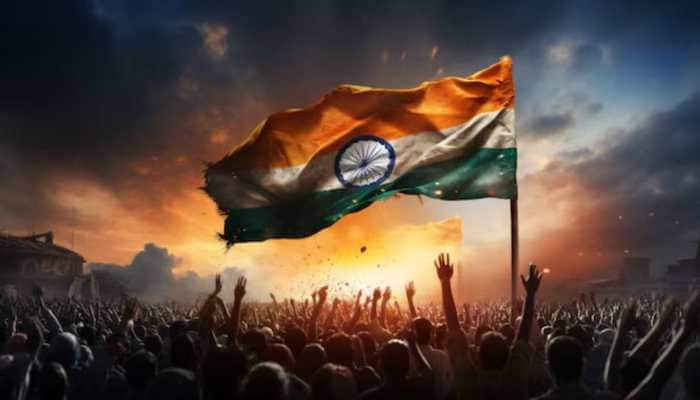Why Sufi Lal Shahbaz Qalandar holds the key to Pakistan’s future security
Trending Photos
)
One day the Sufi saint Lal Shahbaz Qalandar was wandering through a desert with a friend when dusk fell and it suddenly turned very cold. The two gathered wood to warm themselves in the night only to discover that they had no light to ignite the timber. His friend asked Qalandar to turn into a Huma (bird) and get charcoal from hell. Immediately, Lal Shahbaz took the form of a falcon and flew into the skies returning hours later but without a splinter. Asked why he had return empty handed, Qalandar explained that there was no raging inferno in hell. Each person who resided there scorched in his own fire!
This deep story is reflective of the spiritual reality of life as much as the physical experience of Pakistan. Month after month, and sometimes, week after week, the country finds itself burning from blasts in its own shrines, market places, political rallies and public congregations kindled by the Frankenstein monster created by itself.
The sad part of the story is that even Lal Shahbaz Qalandar’s shrine has not been spared. Perhaps because it brings to the innocent and simple masses spiritualism and God in a straightforward way. Through a method that is traditional, deep-rooted in the South Asian culture and reflective of the moors that we have emerged from.
Sufism has been entrenched in the subcontinent for more than a 1000 years. Flowing in from Persia across, it travelled across Balochistan, Punjab, Sindh, and Rajasthan to the Indian heartland mingling with the deeply pious temperament of the common people - Why Sufis found acceptance is because they brought with them the message of spiritual bliss in a way that was non-violent, folksy and adaptive of traditional music and art forms.
Attainment of God, the drunkenness of divine love, the high pedestal on which a Sufi saint was placed made religion tangible and personal. Cultural songs, dances and rituals like incense and lamp lighting added local flavour.
It is these very native practices that Islamic purists loathe.
So when a bomb ripped across Sehwan Sharif this February killing over 90 people, the message was loud and clear. It conveyed disapproval of everything that was practiced in Lal Qalandar’s shrine - the music, dance, intermingling of genders and the lore about the Sufi fakir Lal Shahbaz Qalandar and a Hindu demigod Jhule Lal (Varun Dev) being intertwined as one in local faith - made memorable by the references of both in the superhit song ‘Dam a Dam Mast Qalandar’.
The incident was not an isolated one. A blood trail of such savagery passes across the length and breadth of Pakistan, clearly attempting to loosen and break the scaffold of Sufi faith in the country.
More than a decade back, in 2005, Pir Rakhel Shah of Fatehpur was attacked. This was followed by a litany of such incidents at Data Darbar in Lahore, Abdullah Shah Ghazi in Karachi, Baba Farid’s dargah in Pakpattan, Sakhi Sarwar in Dera Ghazi Khan, Dargah Ghulam Shah Ghazi in Maari, Baba Nangay Shah's shrine in capital Islamabad and Shah Norani shrine in Khuzdar besides the killing of Sufi singer Amjad Sabri.
The growing violence is in reality a battle of ideologies within Islam. One is the puritanical and very orthodox stream of Deobandi/ Wahabi/Salafi practices and on the other side are mystical Sufis and the moderate Barelvi sect.
Sufism which had a fairly strong hold in the Pakistani territory for centuries, began to lose its charm in late 1970s. The exposure of Pakistanis to orthodox Islam because of travelling to the Middle East, the mushrooming of madrasas funded by Saudi petro dollars in the absence of robust education system and the rise of Zia ul Haq sounded the death knell for this very indigenous version of Islam.
The frequency of assaults now shows that the puritans are winning and spreading roots even in areas like rural Sindh which were hitherto out of their reach. The idea is to threaten, coax and force people to give up passive and personal spiritualism - which welcomes people of all faiths and both the genders - and to toe their line of hardline Islam where women are invisible in openly practising religion and Hindus, Shias, Christians etc. are not welcome unless they too convert.
The crux of the matter is this. Where does Pakistan want to see itself in future? Does it want to retain its vernacular identity and history where moderate Islam held sway or does it want to become an image of Saudi Arabian concepts.
In recent years, governments have begun to feel the pain of extremism and found that groups like Tehreek-i-Taliab-Pakistan, ISIS and sectarian groups like Lashkar-e-Jhangvi may be becoming entities that are too hot to handle. Fundamentalism, clearly, will consume not just Pakistan’s ethnicity but the country itself.
Unfortunately, statistics reveal a horror story. The minority population in Pakistan has shrunk from 24% in 1947 to just about 4% now. Madrasas that promote puritan Islam which were about 8000 immediately after Independence have presently bloated to 2,15,000.
For a more moderate future, investing in traditional Islam and propagation of Sufism will help the common man remain liberal. Because the moment the man on the street starts turning radical, Pakistan will be caught in a vortex of violence that is already pulling it towards its centre.
Pakistan needs more Sehwans, where men and women can dance together. Where Muslims, Hindus and Christians practice spirituality with the same ardour and where the keeper of the shrine is still a Hindu.
Sufism and Barelvi Islam are the very antidotes that Pakistan needs to stay away from the path of destruction. The country needs to wake up and wake up fast to ebb the decay of these moderate facets of Islam. It needs to enlist the support of the Pakistani citizen - the poor, middle class and rich – in preserving the middle path.
The road ahead will not be easy. Pakistan has come down the lane of radicalisation too far. Benazir Bhutto is an example of this. Visiting Qalandar’s shrine, she sat crying in front of the Sufi’s tomb asking questions about her future. Sometime later she was assassinated.
For Pakistan, the war of ideologies will be a make or break one. It will be an arduous task to reverse the current, but it must be done.
Because the question is of survival.
Stay informed on all the latest news, real-time breaking news updates, and follow all the important headlines in india news and world News on Zee News.
Live Tv







)
)
)
)
)
)
)
)
)
)
